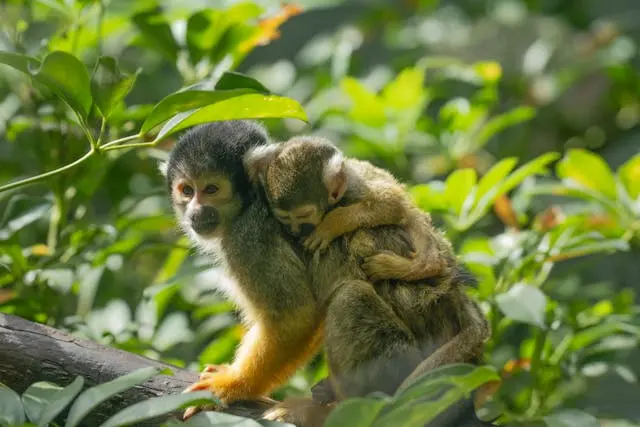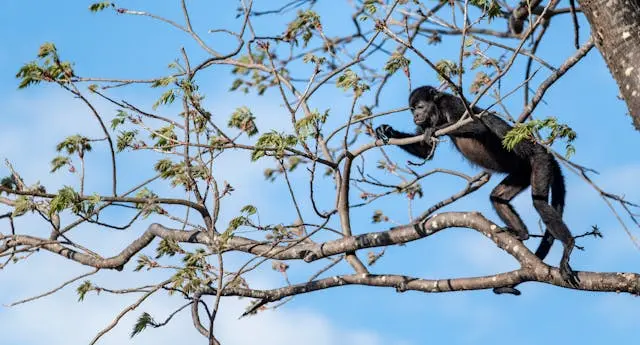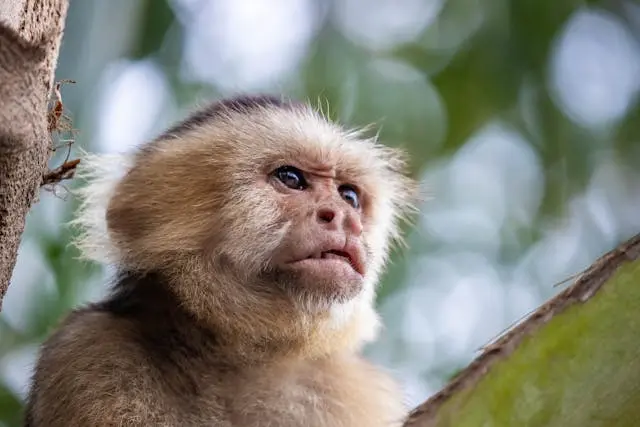The 4 Types of Monkeys in Costa Rica: A Wildlife Guide

Costa Rica is a haven for wildlife lovers, home to an incredible diversity of animals, including four species of monkeys. These playful and intelligent primates are a common sight in the country’s lush rainforests, national parks, and even near coastal areas. If you’re planning a trip to Costa Rica, spotting these monkeys in their natural habitat is an unforgettable experience.
Here’s everything you need to know about the four types of monkeys in Costa Rica, where to find them, and how to observe them responsibly.
1. Mantled Howler Monkey (Alouatta palliata)

Characteristics:
- One of the largest monkey species in Costa Rica, reaching up to 36 inches (91 cm) in length.
- Recognizable by their black fur and distinctive golden-brown mantle along their sides.
- Known for their deep, roaring calls, which can be heard up to three miles away.
Where to Find Them:
- Common in the Pacific lowlands, Caribbean forests, and dry tropical forests.
- Frequently seen in Corcovado National Park, Manuel Antonio National Park, and Santa Rosa National Park.
Fun Fact:
Howler monkeys have a prehensile tail that acts like a fifth limb, helping them navigate through the treetops effortlessly.
2. White-Faced Capuchin Monkey (Cebus imitator)

Characteristics:
- Medium-sized monkey with black bodies and white faces, resembling the famous organ grinder monkey.
- Highly intelligent and social, often seen in large groups.
- Omnivorous diet includes fruits, insects, small mammals, and even bird eggs.
Where to Find Them:
- Found in both dry and wet forests, especially in Manuel Antonio National Park, Monteverde Cloud Forest, and Tortuguero National Park.
- Also frequently spotted in coastal areas near tourist destinations.
Fun Fact:
White-faced capuchins are known to use tools, such as sticks and rocks, to open nuts or defend themselves from predators.
3. Geoffroy’s Spider Monkey (Ateles geoffroyi)

Characteristics:
- Large, slender monkeys with long limbs, a prehensile tail, and black or brown fur.
- One of the most agile monkeys, capable of swinging effortlessly through the rainforest canopy.
- Primarily frugivorous, relying on fruits for most of their diet.
Where to Find Them:
- Mostly found in primary rainforests with dense canopies.
- Best places to see them include Corcovado National Park, Monteverde, and Arenal Volcano National Park.
Fun Fact:
Spider monkeys have one of the most developed brains among New World monkeys, making them highly social and intelligent.
4. Central American Squirrel Monkey (Saimiri oerstedii)

Characteristics:
- The smallest monkey species in Costa Rica, weighing only about 2 pounds (0.9 kg).
- Bright orange and gray fur, with a distinctive white and black face.
- Extremely active and fast-moving, often seen leaping between branches.
Where to Find Them:
- Primarily found in Manuel Antonio National Park and Corcovado National Park.
- They are endangered, with populations declining due to habitat loss.
Fun Fact:
Squirrel monkeys live in large troops of up to 50 individuals, using high-pitched calls to communicate and stay together.
Tips for Responsible Monkey Watching
- Keep Your Distance: Never try to touch or feed monkeys; human food is harmful to them.
- Use Binoculars and Cameras: Avoid disturbing them by getting too close.
- Visit Protected Areas: National parks and reserves provide safe habitats for these animals.
- Follow Park Rules: Stay on marked trails and respect wildlife guidelines.
Costa Rica’s four monkey species—howler monkeys, capuchins, spider monkeys, and squirrel monkeys—each play a vital role in the country’s rich biodiversity. Whether you’re exploring the jungles of Corcovado, the cloud forests of Monteverde, or the beaches of Manuel Antonio, you’ll have a great chance of spotting these fascinating primates.
Ready to embark on your Costa Rican wildlife adventure? Plan your trip to a national park and experience the magic of seeing these incredible monkeys in the wild!
